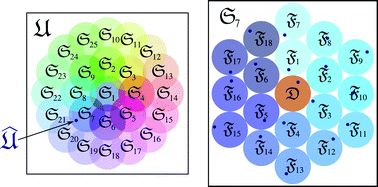Set theory formulation of the model-free problem and the diffusion seeded model-free paradigm
Abstract
Model-free analysis of NMR relaxation data, which describes the motion of individual atoms, is a problem intricately linked to the Brownian rotational diffusion of the ![[Fraktur U]](https://www.rsc.org/images/entities/char_e192.gif) , and its resolution mathematically formulated as the universal solution
, and its resolution mathematically formulated as the universal solution  . Ever since the original Lipari and Szabo papers the model-free dynamics of a molecule has most often been solved by initially estimating the diffusion tensor. The model-free models which depend on the diffusion parameter values are then optimised and the best model is chosen to represent the dynamics of the residue. Finally, the global model of all diffusion and model-free parameters is optimised. These steps are repeated until convergence. For simplicity this approach to
. Ever since the original Lipari and Szabo papers the model-free dynamics of a molecule has most often been solved by initially estimating the diffusion tensor. The model-free models which depend on the diffusion parameter values are then optimised and the best model is chosen to represent the dynamics of the residue. Finally, the global model of all diffusion and model-free parameters is optimised. These steps are repeated until convergence. For simplicity this approach to  will be labelled the diffusion seeded model-free paradigm. Although this technique suffers from a number of problems many have been solved. All aspects of the diffusion seeded paradigm and its consequences, together with a few alternatives to the paradigm, will be reviewed through the use of set notation.
will be labelled the diffusion seeded model-free paradigm. Although this technique suffers from a number of problems many have been solved. All aspects of the diffusion seeded paradigm and its consequences, together with a few alternatives to the paradigm, will be reviewed through the use of set notation.


 Please wait while we load your content...
Please wait while we load your content...